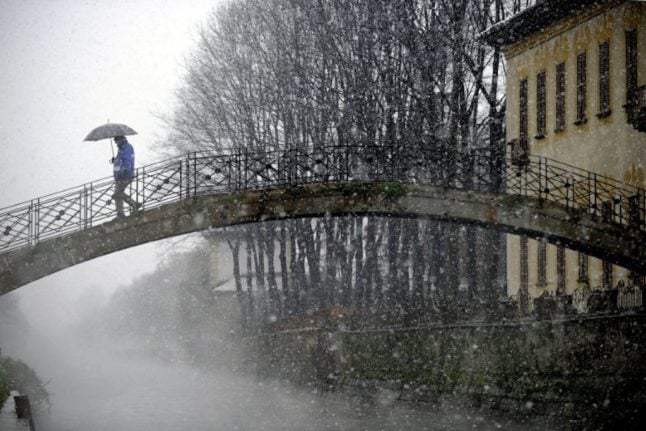Parts of the northern regions of Piedmont and Emilia-Romagna are under an ‘orange’ alert for flood risk, Italy’s Civil Protection Department said in a bulletin released on Sunday evening.
Umbria, Lazio, Abruzzo, Molise, Campania, Basilicata, Puglia, Calabria, Sicily and parts of Veneto, Lombardy, Tuscany and Sardinia are under a lower level ‘yellow’ warning.
The warnings relate to “strong to gale force winds” and “possible storm surges along exposed coasts”, the department said.
📅Lunedì #4marzo
🔔🟠#allertaARANCIONE meteo-idro in Piemonte e in Emilia-Romagna
🔔🟡#allertaGIALLA in 15 regioni
💨🌊Venti di burrasca su Sardegna, Sicilia e Calabria. Leggi l’avviso meteo del #3marzo 👉https://t.co/ZHAYKGnQG0#protezionecivile pic.twitter.com/dVcxVtocgq— Dipartimento Protezione Civile (@DPCgov) March 3, 2024
The Coldiretti farmer’s association said on Monday that the River Po’s level was estimated to have risen 2 metres over the course of the 24 hours in the Turin area.
Two landslides occurred overnight on provincial roads in the popular tourist destination of Cinque Terre in Liguria, while numerous small landslides were reported on the roads surrounding the regional capital of Genoa.
Snow has been recorded below 1,000 metres on the island of Sardinia and on the volcano Vesuvius outside Naples.
An avalanche in the French-bordering northwestern region of Valle d’Aosta overnight has isolated the town of Rhêmes-Notre-Dame, cutting off 80 residents plus additional tourists, according to Italian news agency Ansa.
“We have no reports of damage to people or things,” said Mayor Nella Therisod. “Now the inspection of the technicians is underway to evaluate when we can reopen without endangering anyone.”
A further 6,000 people in the region have reportedly been temporarily isolated due to a snowfall blocking access to the upper Gressoney Valley and the authorities’ decision to cut off road access to Cogne and Valgrisenche as a preventative measure.
The mayor of Gressoney-La-Trinité, where around 2,500-3,000 people are stranded, most of them tourists, said vehicles were working to clear snow from a blocked tunnel and he hoped that the road would be reopened by the afternoon.
The winds and rain that have struck Italy in recent days are expected to continue well into this week, according to weather reports.




 Please whitelist us to continue reading.
Please whitelist us to continue reading.
Member comments